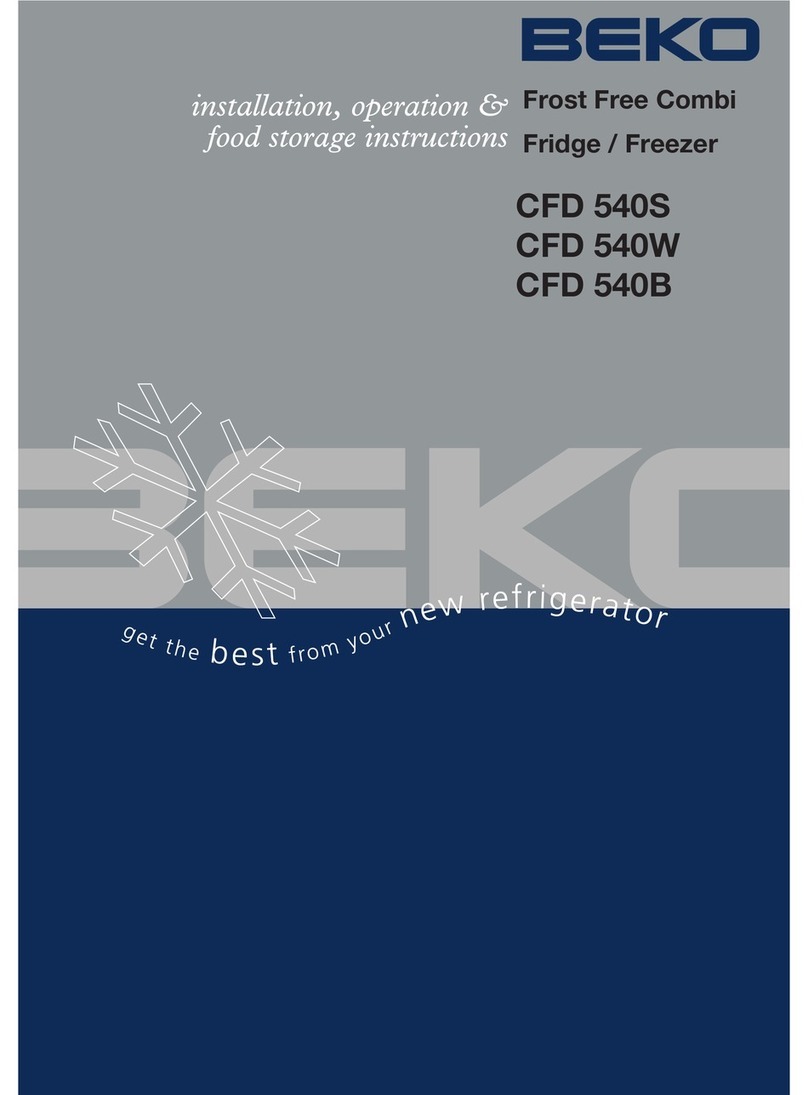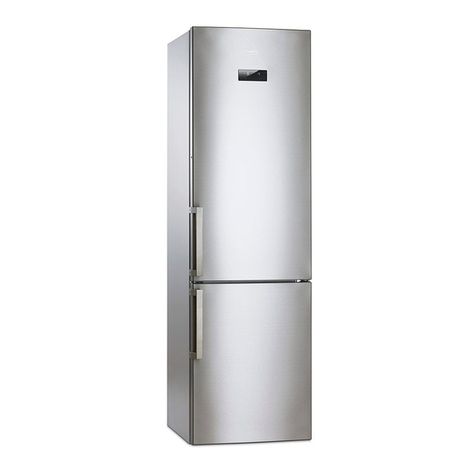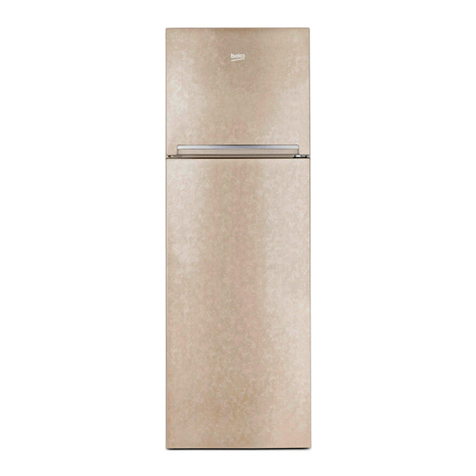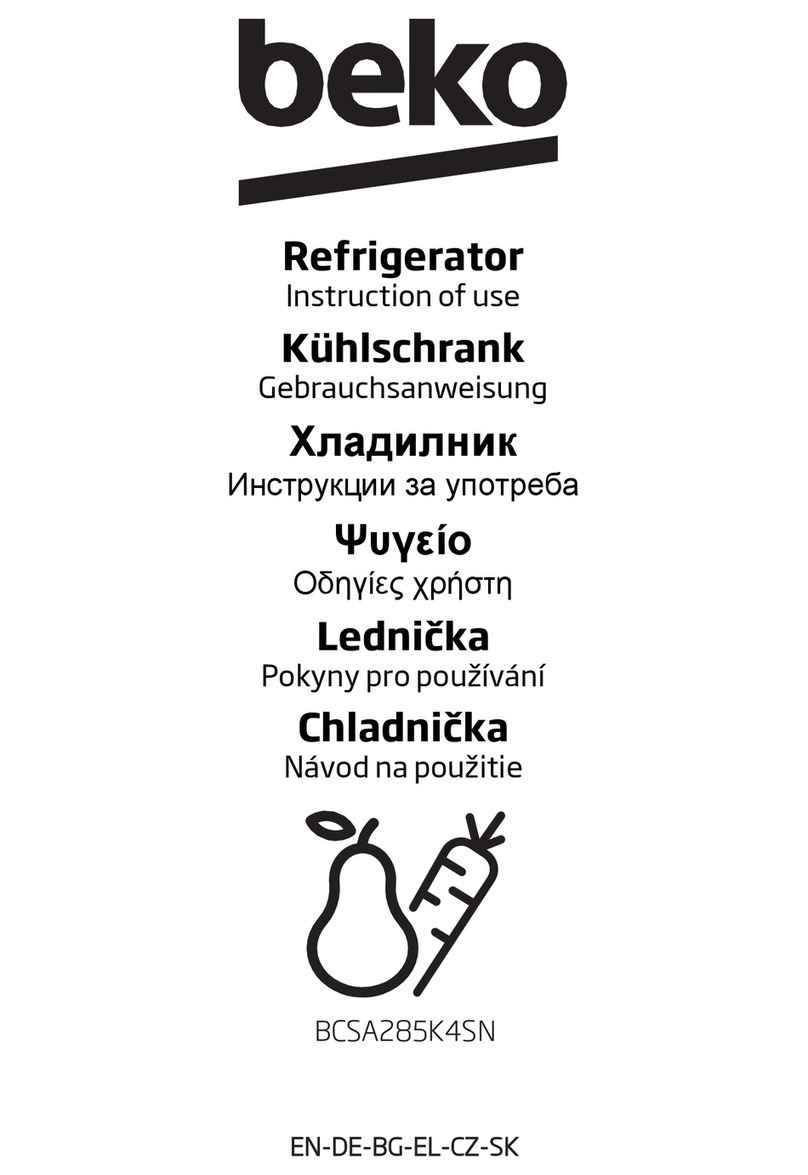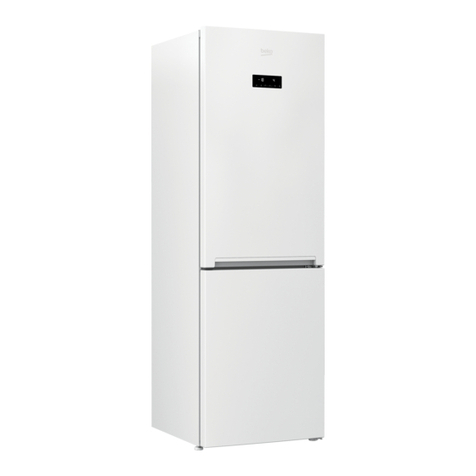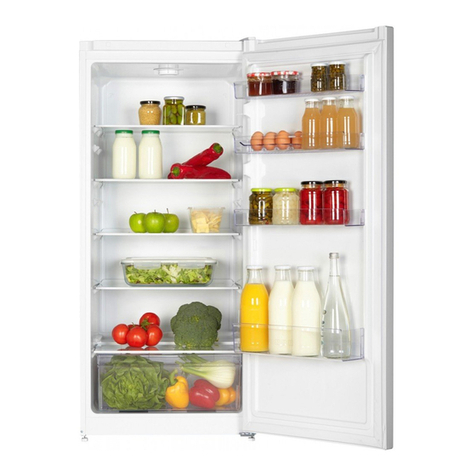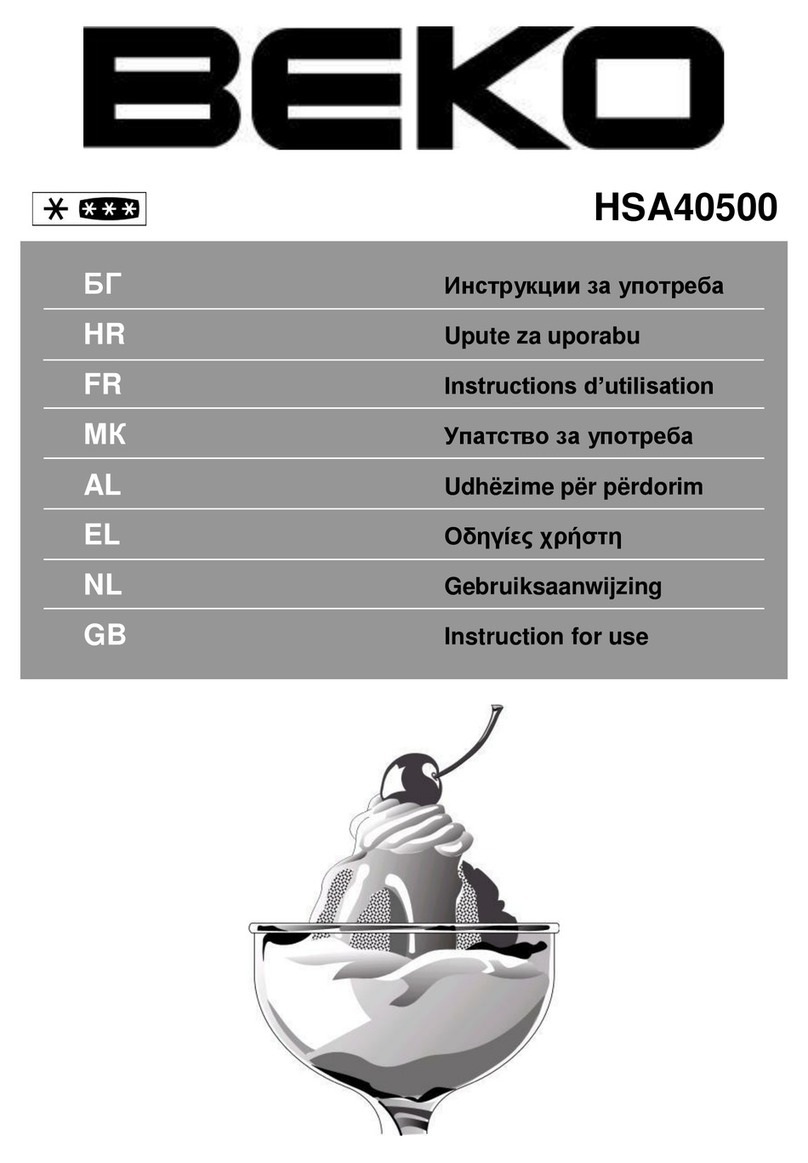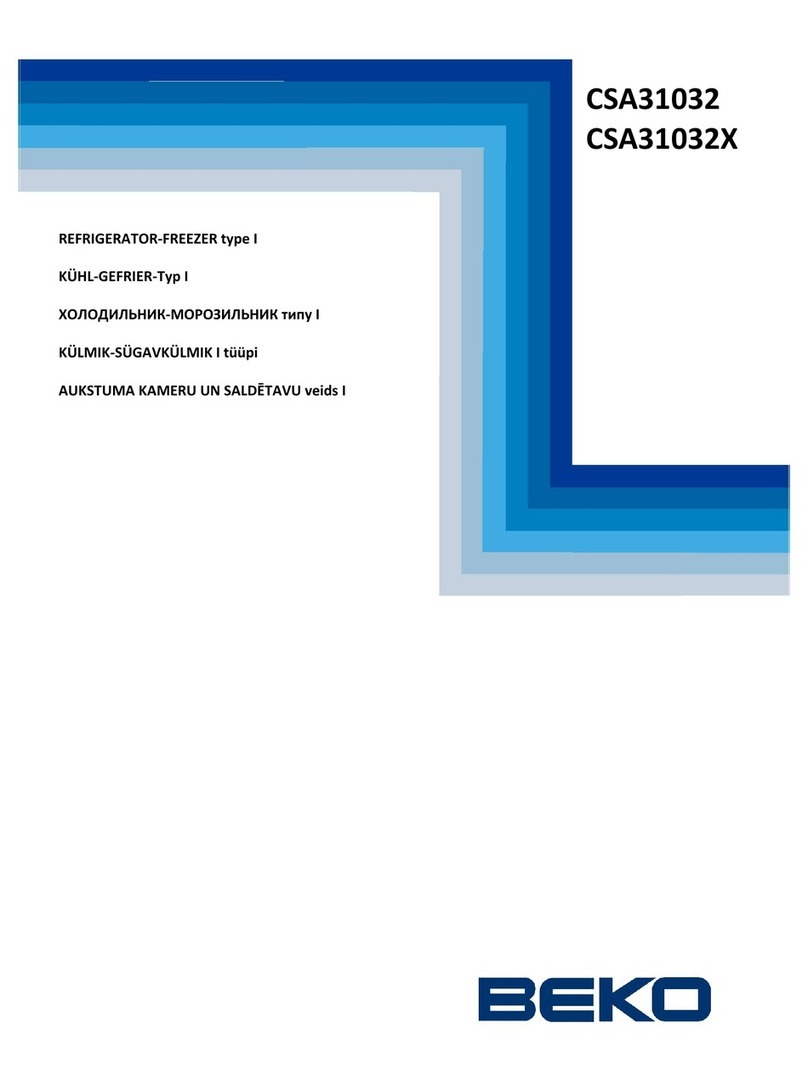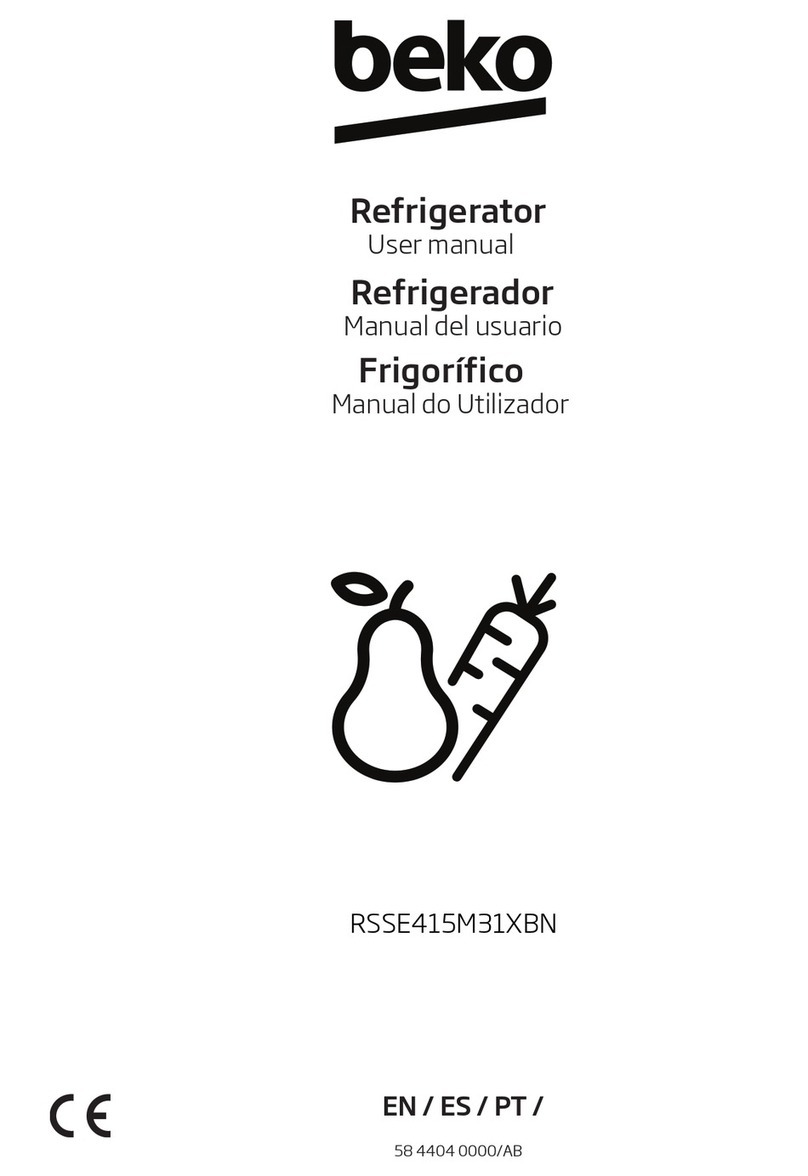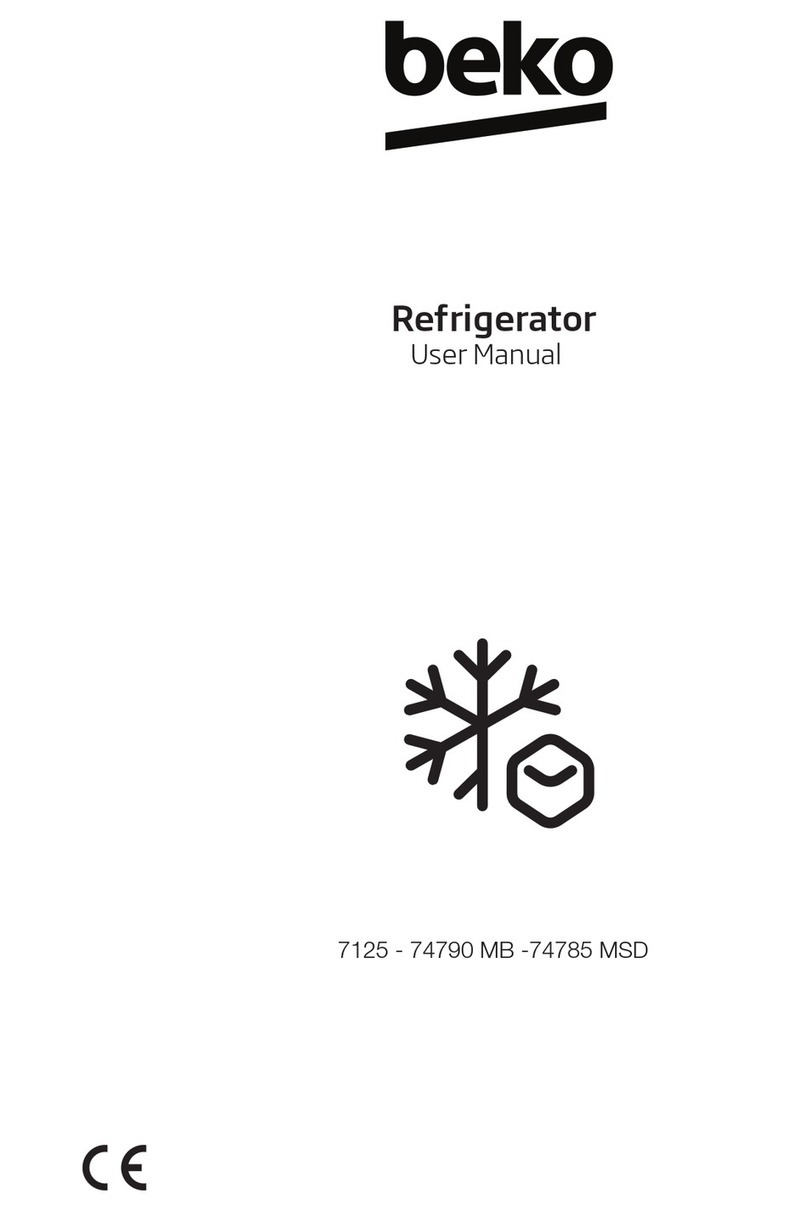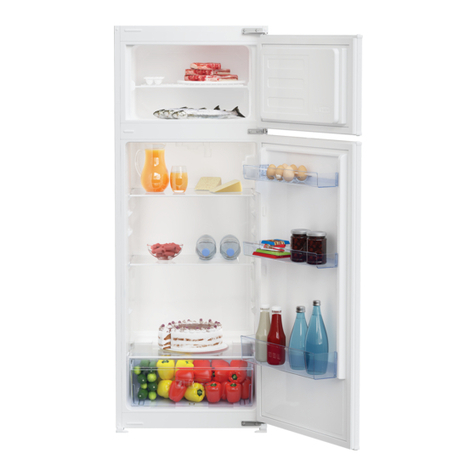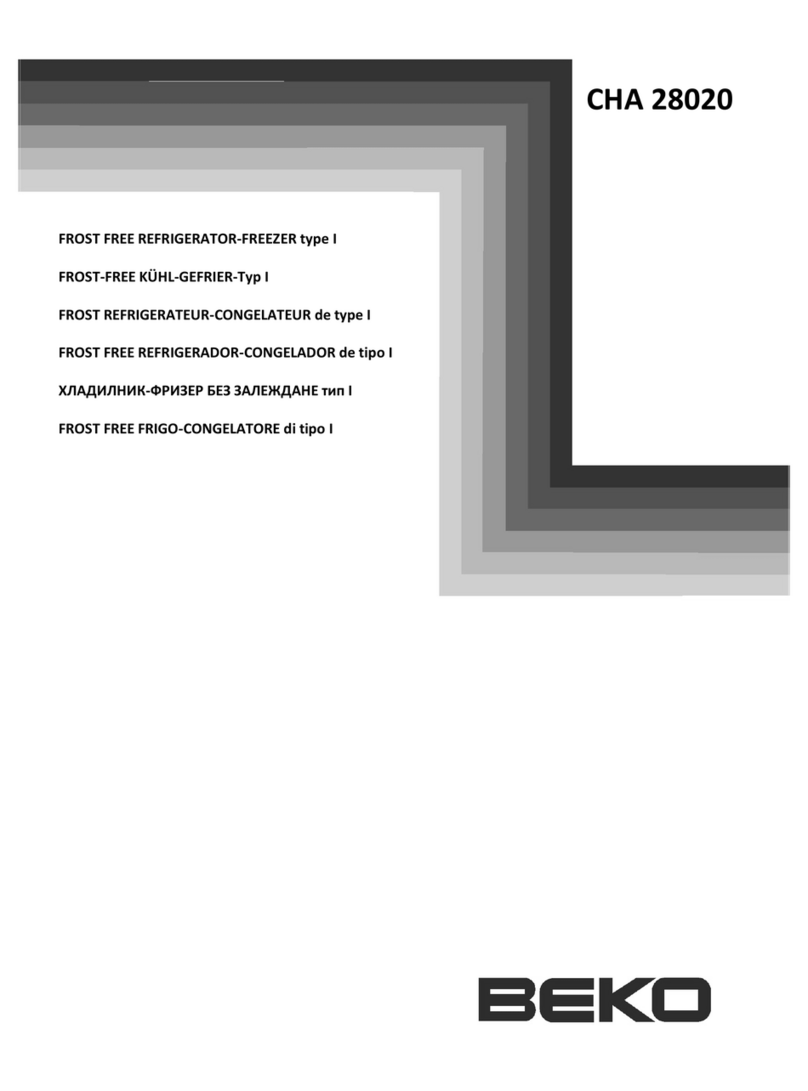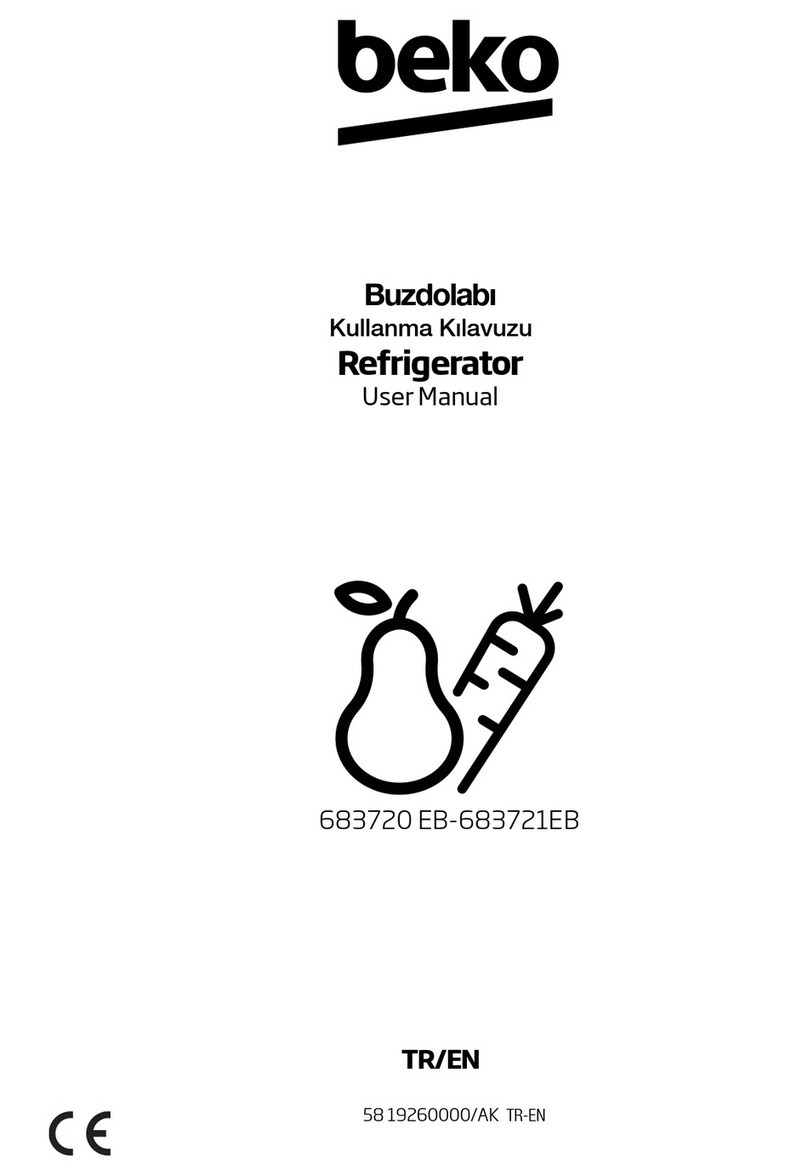WARNING!
In order to ensure a normal operation of your refrigerating appliance, which uses a completely environmentally friendly
refrigerant the R600a (flammable only under certain conditions) you must observe the following rules:
Do not hinder the free circulation of the air around the appliance.
Do not use mechanical devices in order to accelerate the defrosting, others than the ones recommended by the
manufacturer.
Do not destroy the refrigerating circuit.
Do not use electric appliances inside the food keeping compartment, other than those that might have been recommended
by the manufacturer.
ADVARSEL!
For at sikre køleapparatets normale funktion, som i øvrigt bruger den miljøvenlige kølervæske R600a (kun brandbar under
visse omstændigheder), skal følgende forholdsregler følges:
Bloker ikke den fri luftcirkulation omkring apparatet.
Brug ikke andet mekanisk udstyr, end det der er anbefalet af fabrikanten for at accelerere afisningsprocessen.
Ødelæg ikke kølekredsløbet.
Brug ikke elektriske apparater inde i skabets opbevaringsafsnit, med mindre de er af en type, der er anbefalet af fabrikanten.
VARNING!
För att försäkra dig om en normal drift av din kylningsenhet, som använder ett miljövänligt kylmedel R600a (endast flambart
under vissa förhållanden) måste du beakta följande regler:
Förhindra inte att luften cirkulerar fritt runt enheten.
Använd inte mekaniska enheter för att snabba på avfrostningsprocessen, förutom det som rekommenderas av tillverkaren.
Skada inte kylningskretsen.
Använd inte elektriska apparater inuti förvarningsfacket, förutom de som rekommenderas av tillverkaren.
VAROITUS!
Jäähdystyslaitteen, joka käyttää täysin ympäristöystävällistä jäähdytysainetta R600a (syttyy vain tietyissä olosuhteissa),
normaalin toiminnan varmistamiseksi on noudatettava seuraavia ohjeita:
Älä estää ilman vapaata kiertoa laitteen ympärillä.
Älä käytä mekaanisia tai muita keinoja, joita valmistaja ei suosittele, sulatusprosessin nopeuttamiseen.
Älä vahingoita jäähdytysvirtapiiriä.
Älä käytä ruokalokeroissa laitteen sisällä sähkölaitteita, paitsi niitä joita valmistaja mahdollisesti on suositellut.
ADVARSEL!
For å sikre normal drift av kjøleapparatet, som bruker den miljøvennlige kjølevæsken R600a (brennbar bare under spesielle
vilkår), må du følge disse reglene:
Det må alltid være fri sirkulasjon av luft rundt apparatet.
Bruk ikke andre mekaniske gjenstander for å gjøre avisingen raskere enn dem som anbefales av produsenten.
Ødelegg ikke kjølekretsen.
Bruk ikke andre elektriske apparater inne i apparatet enn dem som eventuelt anbefales av produsenten.
УВАГА!
Для того, щоб забезпечити нормальну роботу Вашого холодильника, в якому використовується охолоджуючий реагент
R600a, абсолютно нешкідливий для навколишнього середовища (займається лише за певних умов), Вам Необхідно
дотримуватися наступних правил.
Не створюйте перепон для вільної циркуляції повітря навколо холодильника.
Не користуйтесь жодними механічними пристроями та інструментами для видалення льоду під час розморожування
холодильника, окрім тих, що рекомендовані виробником.
Не допускайте пошкодження охолоджуючого контура.
Не встановлюйте всередину холодильного відділення, де зберігаються продукти, жодних електричних пристроїв,
окрім тих, що рекомендовані виробником.
ВНИМАНИЕ
Для того, чтобы обеспечить нормальную работу Вашего холодильника в котором используется охлаждающий реагент
R600a, совершенно безвредный для окружающей среды (воспламеняющийся только в определенных условиях), Вам
следует соблюдать следующие правила.
Не создавайте препятствий для свободной циркуляции воздуха вокруг холодильника.
Не пользуйтесь никакими механическими приспособлениями и инструментами для удаления льда при
размораживании холодильника, коме тех, которые рекомендованы изготовителем.
Не допускайте повреждения охлаждающего контура.
Не устанавливайте внутрь холодильного отделения, где хранятся продукты, никакие электрические устройства,
кроме тех, которые рекомендованы изготовителем.
